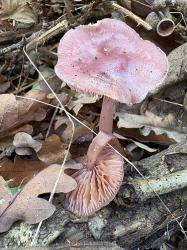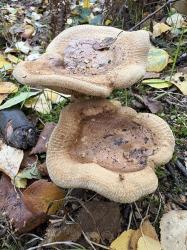Fungi
Take a walk through a forest, a field or a park during the autumn and you’ll almost definitely spot them. Clusters of toadstools popping up out of the ground, growing in rings on the grass or even out of the side of trees. You might know toadstools as a type of fungus, a group that’s often linked with mould and rot. But fungi are in fact a huge diverse range of organisms that are crucial for life on earth.
The world of Fungi has fascinated me for many years and walking on Brayton Barff every day with our dogs I see a wide and varied type of fungi throughout the year. The British Isles are one of the most thoroughly recorded areas in the world for fungi, with several thousand species of fungi recorded so far.
Unlike our flowering plants, fungi does not contain chlorophyll and so cannot live by photosynthesis. They live by breaking down organic matter in the environment and by doing so they reintroduce life giving nutrients into the ecosystem.
Most of the fungi on the Barff grow in the soil or on wood and other plant material. They consist of individual threads which together form the dense, white structure called the mycelium. What we refer to as the mushroom is only the fruiting body, which grows from the mycelium, under the right conditions. The fruiting body produces vast numbers of spores, and this is how the fungus reproduces.
The Barff is home to many species, which can be seen throughout the year but mainly from October to November when a new species seems to appear daily.
Below is just a small selection of Fungi which I have come across whilst walking through the woodland.




























